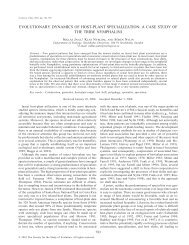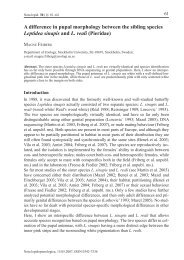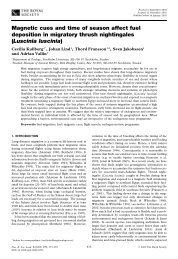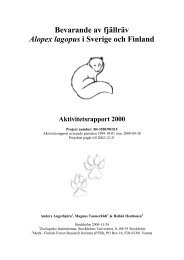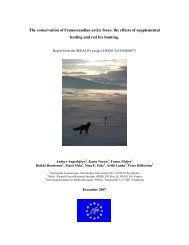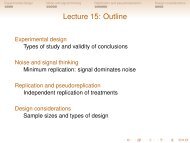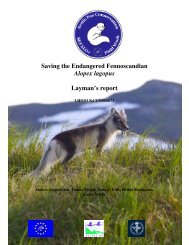Evolution of Fighting Behaviour: The Effect of Variation in Resource ...
Evolution of Fighting Behaviour: The Effect of Variation in Resource ...
Evolution of Fighting Behaviour: The Effect of Variation in Resource ...
You also want an ePaper? Increase the reach of your titles
YUMPU automatically turns print PDFs into web optimized ePapers that Google loves.
196 M. ENQUIST AND O. LEIMAR0-5FIG. 3. An ESS for an owner-<strong>in</strong>truder game with <strong>in</strong>formation asymmetry (second example <strong>in</strong> thetext). <strong>The</strong> ESS is shown as switch<strong>in</strong>g l<strong>in</strong>es: the heavy l<strong>in</strong>e is the <strong>in</strong>truder's strategy, and the light l<strong>in</strong>esare the owner's local strategies (one for each amount <strong>of</strong> resource). <strong>Resource</strong> value varies from 0.5 to1.5 with <strong>in</strong>crement 0-1. <strong>The</strong> topmost f<strong>in</strong>e l<strong>in</strong>e corresponds to resource value V = 0.5 (for the owner),and as V <strong>in</strong>creases, the owner becomes more persistent.As shown, the owner will become more persistent as the value <strong>of</strong> the resource<strong>in</strong>creases. This has the effect that the <strong>in</strong>truder, not hav<strong>in</strong>g perfect <strong>in</strong>formation aboutthe resource, tends to w<strong>in</strong> the "wrong" fights. <strong>The</strong> <strong>in</strong>truder will take over most <strong>of</strong>the resources <strong>of</strong> low value but few <strong>of</strong> the resources <strong>of</strong> high value (see Fig. 4). Thisis further demonstrated <strong>in</strong> that the owner will w<strong>in</strong> no more than 55% <strong>of</strong> the<strong>in</strong>teractions, but the overall utility for an owner is 0.26 (rang<strong>in</strong>g from 0.02 forV=0.5 to 0-57 for V= 1.5) compared to only 0.10 for <strong>in</strong>truders.<strong>The</strong> shape <strong>of</strong> the <strong>in</strong>truder's switch<strong>in</strong>g l<strong>in</strong>e differs from the owner's l<strong>in</strong>es <strong>in</strong> thatit is more flat (see Fig. 3). This is connected to the fact that there is <strong>in</strong>formationabout resource value <strong>in</strong> the owner's behaviour. From the <strong>in</strong>truder's po<strong>in</strong>t <strong>of</strong> view,1.0 ~Ii0= z" 05:50 I I0.5 1 1,5<strong>Resource</strong> volueFIG. 4. <strong>The</strong> curve illustrates the probability that the owner w<strong>in</strong>s as a function <strong>of</strong> resource value withthe ESS for the owner-<strong>in</strong>truder game with an <strong>in</strong>formation asymmetry shown <strong>in</strong> Fig. 3. For comparison,data for an owner-<strong>in</strong>truder game with an uncorrelated role asymmetry (no <strong>in</strong>formation asymmetry) aregiven as dots.



